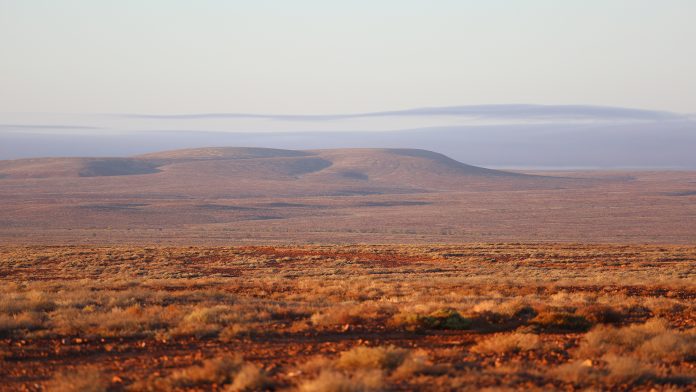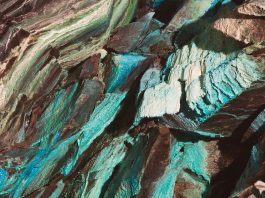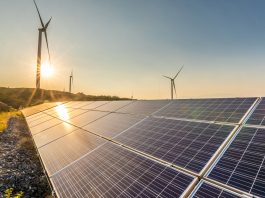As the global energy transition continues to gather pace, Chris Stevens, CEO of Coda Minerals Ltd, discusses the opportunities for developing ethical copper and cobalt in South Australia.
Coda Minerals Ltd was founded in 2019 to explore and develop high-quality mineral assets to power a low-carbon future.
The company listed on the Australian Securities Exchange (ASX: COD) in 2020, and, just over a year since completing its IPO, has delivered a standout initial mineral resource estimate (MRE) for one of Australia’s largest known sediment-hosted copper-cobalt deposits. Following publication of this MRE, Coda announced a landmark merger that has allowed it to consolidate 100% ownership of the deposit.
At the same time, Coda has captured the market’s attention with an emerging iron oxide-copper-gold (IOCG) discovery located immediately adjacent to, and below, this substantial deposit. Since announcing this exciting discovery in mid-2021, the company has been pursuing a bold exploration programme to unlock its full potential – drilling a series of +1km deep diamond holes that would typically be the domain of much larger major mining companies.
Unique geological setting for developing ethical copper and cobalt in South Australia
The Gawler Craton in South Australia is known for hosting some of the largest copper deposits on Earth, including the Olympic Dam Deposit, owned by BHP, and the Carrapateena deposit, owned by Oz Minerals Ltd, situated just 40km from Coda’s Elizabeth Creek Project.
Coda’s ground is geologically unique in that it hosts both the IOCG style of mineralisation and a sediment-hosted copper-cobalt style of mineralisation analogous to that seen in Zambia and the DRC. In the case of the Emmie System, these two styles of mineralisation are stacked on top of each other. Geologists have long argued about the origins of the copper-cobalt mineralisation, but with recent drilling Coda appears to have answered the question: these deposits formed as part of multiple pulses of mineralising fluid travelling across fault lines from the basement rocks, resulting in both IOCG and sedimentary deposits.
In more simple terms, Coda believes this is demonstrative of massive copper systems creating multiple deposits at varying depths across the Elizabeth Creek tenure. Coda has already discovered one of these copper systems at Emmie Bluff and has strong geophysical evidence of a second system at the Elaine prospect.

Strong geological foundations
Given the paucity of exploration for copper globally over the past decade, it is rare to see new discoveries in the copper space, especially ones resulting in over 1.1 million tonnes of contained copper and cobalt defined under the Australian JORC classification system.
In December 2020, Coda announced a maiden Indicated and Inferred Mineral Resource Estimate for the Emmie Bluff deposit at Elizabeth Creek. It comprises 43Mt at 1.3% copper, 470ppm cobalt, 11g/t silver and 0.15% zinc (1.84% CuEq) (reported at a cut-off grade of 1% CuEq), containing approximately 560kt copper, 20kt cobalt, 15.5Moz silver and 66kt zinc (800kt CuEq).
Of this resource, 90% of the mass and 92% of the contained metal is classified in the ‘Indicated Resource’ category, the second-highest confidence level under the JORC system.
Emmie Bluff is one of three known ‘Zambian-style’ copper-cobalt deposits at Elizabeth Creek, including JORC 2012 compliant Indicated Mineral Resources at the Windabout (18Mt @ 1.14% CuEq) and MG14 (1.8Mt @ 1.67% CuEq) deposits.
Collectively, the three resources at Elizabeth Creek now host a total of 1.1 million tonnes of contained copper equivalent.
Economic studies advancing for copper-cobalt mineralisation
Coda has commenced preliminary scoping level studies to confirm the mining and processing methods for Emmie Bluff and the company’s other Indicated Mineral Resources at MG14 and Windabout.
With initial mining and processing studies materially complete for the open-pit resources at MG14 and Windabout and underground mining studies now advancing, Coda expects to complete a full-scale scoping study over the copper-cobalt mineralisation in the second half of 2022, paving the way to undertake advanced feasibility study work.
These studies focus not only on the technical aspects of the project but also on approvals timeframes, environmental and aboriginal heritage impacts, water, power, and the full suite of ESG governance systems under which the project would be developed.
Coda is also continuing studies into using environmentally benign lixiviants to process copper and cobalt from its project. Work on glycine technology, an inert amino acid developed by Western Australia’s Curtin University, is ongoing. Coda has championed this technology and was the first commercial organisation to obtain a licence to use glycine for mineral processing.
Coda’s team has a long history of working on these deposits and is passionate about driving high-quality outcomes through its study work.
“We believe that Elizabeth Creek will have an important part to play in providing the copper and cobalt that is integral to achieving a low-carbon future,” notes Coda’s CEO, Chris Stevens.
“Every successful mine must be underpinned by a diligent, high-quality study, undertaken and optimised by the right people. We are making great advances on this work and are looking forward to finalising the first stage of the study this year.”

Enormous potential upside to mine copper and cobalt
In addition to the existing copper-cobalt resources, Coda is committed to high-quality exploration. In June 2020, following nearly two years of target generation work, Coda struck copper mineralisation with its first deep IOCG exploration hole.
On 9 June 2021, Coda announced that its first diamond drill-hole to test the Emmie IOCG target had intersected 200m of intense IOCG alteration, including approximately 50m of copper sulphide mineralisation. The announcement sparked a sharp increase in Coda’s share price and the commencement of a large-scale exploration programme seeking to define a significant world-class copper-gold deposit.
To date, Coda has drilled over 15 holes into Emmie IOCG, with all but three returning significant widths of mineralisation, several over 3% copper and 0.5g/t gold. Exploration continues as the company seeks to increase the thickness of intercepts and define multiple high-grade copper zones within a large geophysical anomaly.
According to Chris, the unique convergence of multiple deposits makes this an exciting opportunity: “As a company dedicated to exploration, we are delighted to be exploring from a strong foundational base. Our sedimentary copper-cobalt deposits provide us with a foundational asset, which I believe will form part of a large, long-life copper-cobalt operation. Our IOCG exploration programme targets world-class assets in an area that has demonstrated the ability to produce some of the biggest copper deposits on Earth. We genuinely believe we have a tiger by the tail.”
Coda believes it can rise to the challenge of progressing development studies on the copper-cobalt deposits and continuing to explore for more copper at Elizbeth Creek. Furthermore, the company is also advancing work at its Cameron River Copper Project in the Mount Isa Inlier region of Queensland, another world-famous copper region. Chris notes, “We are not afraid of hard work at Coda — our recent discoveries have energised us at Elizabeth Creek and we see huge potential at Cameron River as well, where drilling is due to commence in August 2022.”
Solving the global copper deficit
CRU Group has forecast a copper supply deficit of six million tonnes per annum for the next decade, with an investment of $100bn required to meet global copper demand. To fill this projected demand, it is estimated that over 75 new copper mines will need to come into production over the next eight years.
To further complicate the supply issue, copper grades are declining, technical complexity is increasing, and most importantly, many potential new sources of copper are located in areas with high sovereign risk and inferior ESG credentials.
Copper projects located in tier-one jurisdictions like South Australia will increasingly play a vital role in filling the supply deficit as investors look to fund mines with high-quality ESG credentials capable of supplying green, ethical copper for the world’s energy transition needs.
Genuine green credentials for South Australia, tier-one jurisdictions
The term ‘tier-one jurisdiction’ is often overused in the mining space; however, there is no doubt that South Australia is one of a handful of genuinely top tier jurisdictions for mineral exploration anywhere on the planet.
Home to some of the world’s largest miners and explorers, including BHP and Oz Minerals, South Australia has recently attracted smaller explorers to undertake exploration activities in the energy transition and critical minerals space.
This is critical to the future of mineral supply as traditionally, the larger miners have been reluctant to commit significant funds to grassroots and brownfield exploration. The junior exploration sector is the lifeblood of discovery, and a whole new generation of explorers has been getting serious about South Australian exploration.
One of the key reasons for the success of South Australia as a jurisdiction is its powerful ESG and renewable energy credentials. These forward-thinking policies make the prospect of developing new, low-impact, carbon-neutral mines a highly attractive proposition for the next generation of miners.
Chris comments, “South Australia is a genuinely great place to explore for critical minerals and do business. Highly prospective geology combined with proactive and responsive government regulation makes it a highly attractive place for explorers like Coda.”
As a member of the Minister’s Executive Advisory Committee (MEAC) that advises the SA Government on energy and critical minerals policy, Chris has first-hand experience of South Australia’s green energy credentials. South Australia is one of the most forward-thinking places globally and is at the vanguard of the global energy transition. The energy system has been transformed from 1% to 60% renewable over the past 15 years and expects to achieve net zero by the 2030s.
Chris added, “This is incredibly important for companies looking to develop mines to supply the world’s requirements for green energy transition as any energy mix between the solar array and grid connection is likely to be net zero for the life of mine.
“Coda Minerals is well placed to be at the forefront of South Australia’s minerals industry as it continues its exploration and development work at the Elizabeth Creek Copper Project.”
Please note, this article will also appear in the tenth edition of our quarterly publication.









